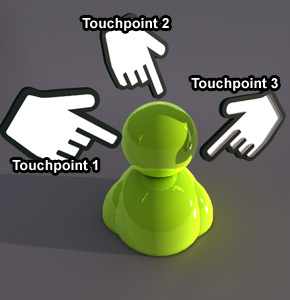Search Campaign Optimization Through Touchpoint Analysis
A vitally important first step to the attribution management process is to gather all the data associated with the “touches” that have been experienced by your target audience both as a result of being exposed to all your marketing efforts and direct traffic. Each “touchpoint” associated with each individual has numerous attributes or characteristics associated […]
A vitally important first step to the attribution management process is to gather all the data associated with the “touches” that have been experienced by your target audience both as a result of being exposed to all your marketing efforts and direct traffic.
experienced by your target audience both as a result of being exposed to all your marketing efforts and direct traffic.
Each “touchpoint” associated with each individual has numerous attributes or characteristics associated with it.
For example, each search impression or click has attributes such as keyword, engine, placement/ranking, ad creative, offer, landing page, day-part, and more.
Each display ad impression or click has a different set of characteristics associated with it and the same is true for each channel.
When all the data from all these touchpoints across all your channels has been assembled, not only is the attribution management process able to assign the appropriate amount of credit to each touchpoint (and each marketing effort), but a value-added process called touchpoint analysis can also take place.
This can be a treasure trove for search marketers.
What Can Touchpoints Tell Us?
By looking at the group of touchpoints associated with an individual’s “touchpoint stack,” and in turn all of the touchpoint stacks of all the individuals exposed to your marketing efforts who have and have not converted, a number of findings emerge.
In particular, a picture of your various conversion funnels (for each of your products, product lines, products types, etc.) will come into focus.
You’ll be able to see the relationship between organic and paid search – and for that matter direct navigation – and the extent to which each plays a role at each stage in the engagement/sales funnel. You’ll learn where in the funnel both branded and non-branded keywords play a role.
You’ll identify the specific keywords that are particularly effective at generating top-of-funnel activity (“openers”), the keywords that appear at the middle of the funnel (“advancers”), and which perform best at the bottom of your funnel (“closers”).
Again, these findings may vary widely for each product or service you sell, so there may be many different funnels you will uncover with these insights.
You’ll also be able to identify the sequence of touchpoint attributes that generate the best performance toward your marketing goals, as well as any “typical paths” through the conversion funnel.
For example, do people start with a specific non-branded keyword in paid search at top-of-funnel, move to a specific branded organic keyword mid-funnel, and direct navigate to your site at bottom-of-funnel?
Do certain keywords used at one stage of the funnel lead to specific keywords at the next stage of the funnel?
Turning These Insights Into Optimization
Once you’re armed with these types of touchpoint analysis findings, you can focus on optimization strategies and tactics to utilize the most productive touchpoint attributes and apply more of your budget on the best performing combination of attributes.
For example, is a particular keyword, ad creative, bid price, landing page and day-part combination found to be the best “opener” for a specific product type?
If so, decrease budget on less productive attribute combinations and devote more budget to this more effective combination. Of course, it’s also important to make sure that the combinations on which you decrease budget aren’t top performers at other stages of the funnel.
You also have the opportunity to strengthen the attributes associated with each funnel stage. If a particular keyword, engine or ad creative is an effective opener, you can modify the copy of the landing page so that it doesn’t try to “close” the conversion – but instead helps cultivate the prospect.
If you find that there is a particular sequence of keywords that’s more effective than others, perhaps you can embed a call to action using that keyword sequence on the landing page used for the previous stage of the funnel.
As a search marketer, your very nature is to mine insights like these and convert them into optimization strategies that you can test and refine. If you or your colleagues are already doing attribution management, consider performing touchpoint analysis in order to uncover this additional dimension of valuable insights.
Contributing authors are invited to create content for Search Engine Land and are chosen for their expertise and contribution to the search community. Our contributors work under the oversight of the editorial staff and contributions are checked for quality and relevance to our readers. The opinions they express are their own.
Related stories
New on Search Engine Land